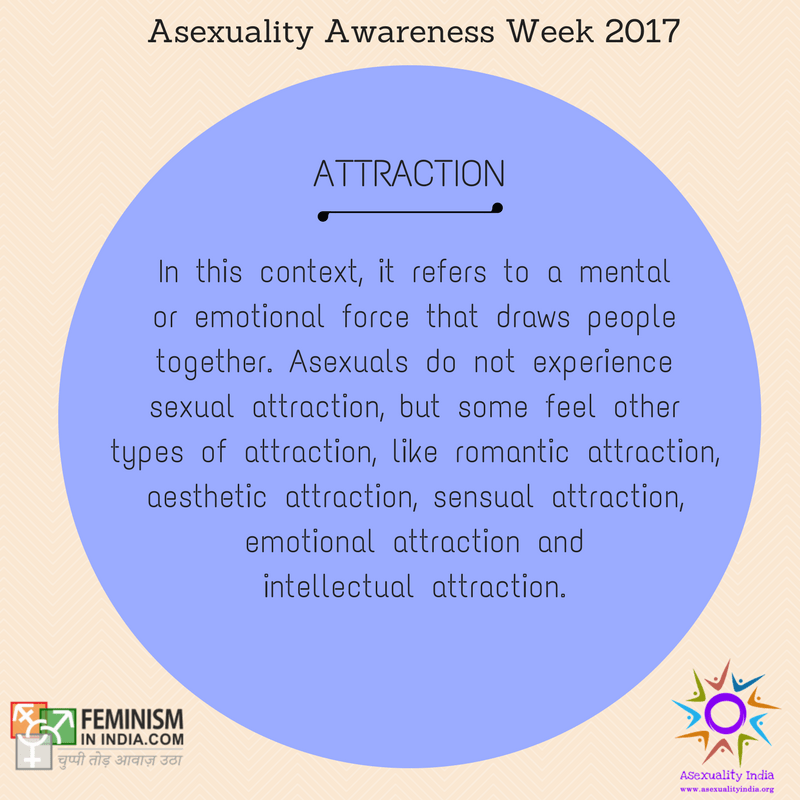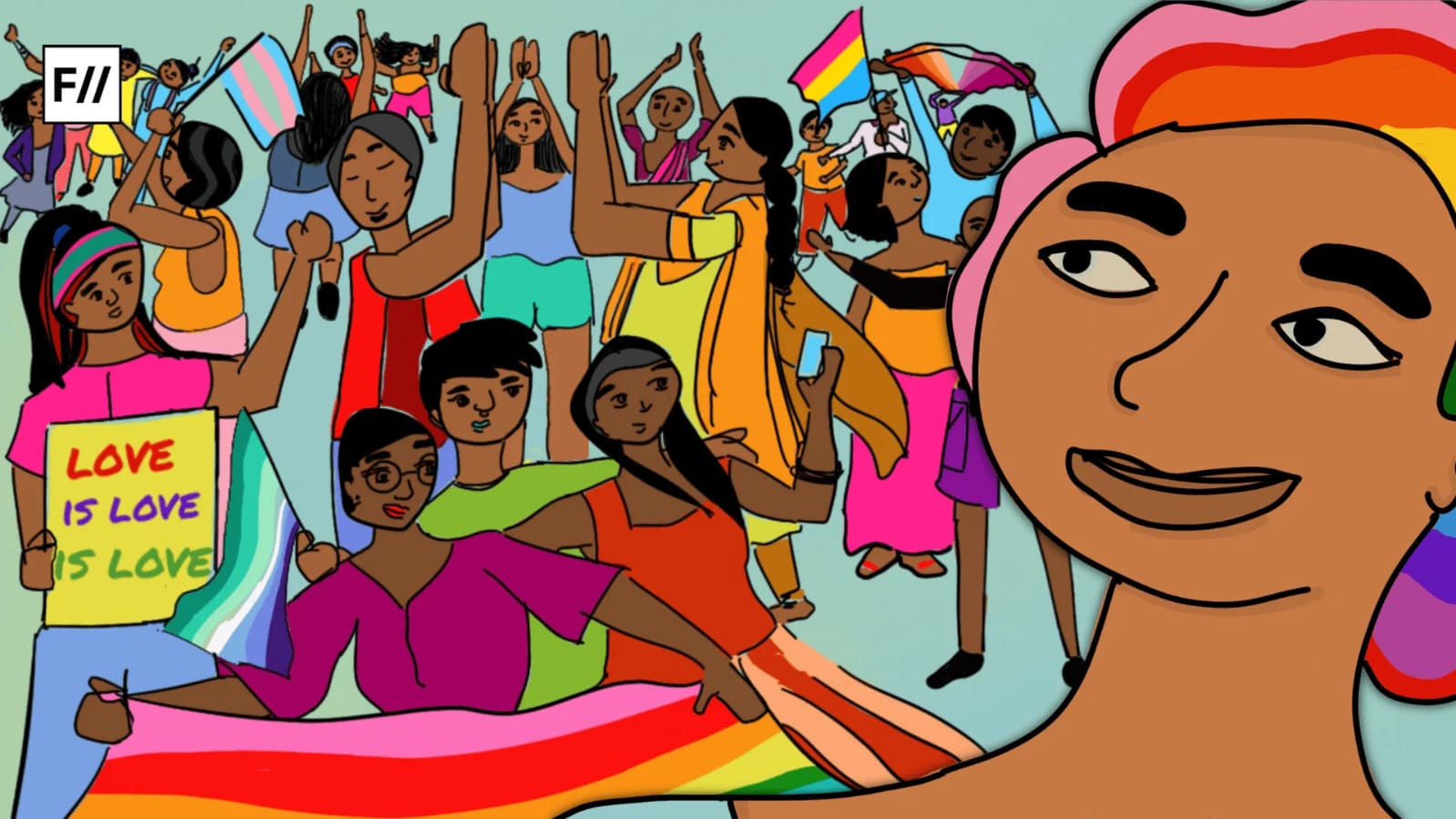According to AVEN (The Asexual Visibility and Education Network), asexuality is defined as “someone who does not experience sexual attraction.” But the asexuality or ace spectrum is much more than this.
Every year an international community celebrates Asexual Awareness Week in the last week of October. The week is an international campaign that seeks to educate about asexual, aromantic, demisexual, and grey-asexual experiences and to create materials that are accessible to the community and the allies around the world.
Like last year, this year too, FII collaborated with Asexuality India, the first website dedicated to Indians who identify as asexuals, to raise awareness about asexuality in India and to put out personal stories of asexual people.
As a starting point, it is important to understand what asexuality and various other terms in the asexual spectrum mean. These eight definitions below will help you understand the ace spectrum.

Asexuality: Asexuality is a sexual orientation with a wide spectrum and has NO arbitrary definition. The spectrum extends from little or rare sexual attraction to no sexual attraction at all. There is no litmus test to determine if someone is asexual. Asexuality is like any other identity- at its core, it’s just a word that people use to help figure themselves out.

Demisexual: A demisexual person does not experience sexual attraction unless they have already formed a strong emotional bond with the person. The bond may or may not be romantic in nature.

Gray-asexual: A gray-asexual person may infrequently experience sexual attraction, may be unsure if they have, or may experience low sexual desire, yet will generally identify as being close to asexual. Gray-asexuals differ from demisexuals in that demisexuals will require an emotional bond before experiencing attraction, yet gray aces do not necessarily require a bond. The word “gray” comes from the “gray area” between asexuality and non-asexuality.

Romantic Orientation – Describes an individual’s pattern of romantic attraction based on a person’s gender(s) regardless of one’s sexual orientation. For individuals who experience sexual attraction, their sexual orientation and romantic orientation are often in alignment (i.e. they experience sexual attraction toward individuals of the same gender(s) as the individuals they are interested in forming romantic relationships with). Examples of Romantic Orientations (not an exhaustive list): Aromantic: individuals who do not experience romantic attraction toward individuals of any gender(s) Biromantic: romantic attraction toward males and females Heteroromantic: romantic attraction toward person(s) of a different gender Homoromantic: romantic attraction towards person(s) of the same gender Panromantic: romantic attraction towards persons of every gender(s) Polyromantic: romantic attraction toward multiple, but not all genders Gray-romantic: individuals who do not often experience romantic attraction Demiromantic: an individual who does not experience romantic attraction until after a close emotional bond has been formed. People who refer to themselves as demiromantic may choose to further specify the gender(s) of those they are attracted to (e.g. demi-homoromantic).

Attraction – There are many different types of attraction, including: Sexual attraction: attraction that makes people desire sexual contact or shows sexual interest in another person(s). Romantic attraction: attraction that makes people desire romantic contact or interaction with another person or persons. Aesthetic attraction: occurs when someone appreciates the appearance or beauty of another person(s), disconnected from sexual or romantic attraction. Sensual attraction: the desire to interact with others in a tactile, non-sexual way, such as through hugging or cuddling. Emotional attraction: the desire to get to know someone, often as a result of their personality instead of their physicality. This type of attraction is present in most relationships from platonic friendships to romantic and sexual relationships. Intellectual attraction: the desire to engage with another in an intellectual manner, such as engaging in conversation with them, “picking their brain,” and it has more to do with what or how a person thinks instead of the person themselves.

Queerplatonic Relationships (QPR’s): Queerplatonic Relationships (QPRs) are those relationships that are not romantic in nature but they involve very close emotional connections that are often deeper or more intense than what is traditionally considered a friendship. Since there is not adequate language to describe queerplatonic partners, some people refer to these partners as zucchini.

Ace: Colloquial abbreviation of “asexual”. Often used to refer to asexual people in a similar manner as “gay” or “straight” are used to refer to homosexual or heterosexual people. Ace also includes gray-asexual and demisexual people.

General dislike of sexuality or sexual activity, including instances where other people are involved. Often accompanied by the belief that or sexuality in any form is “bad” or “wrong”. Antisexual views should not be confused with asexuality.
Also read: I’m Asexual And My Story Matters
References
1. Asexuality, Attraction, and Romantic Orientation
2. Asexuality Archive
3. AVEN
About the author(s)
Feminism In India is an award-winning digital intersectional feminist media organisation to learn, educate and develop a feminist sensibility and unravel the F-word among the youth in India.





General dislike of sexuality or sexual activity?